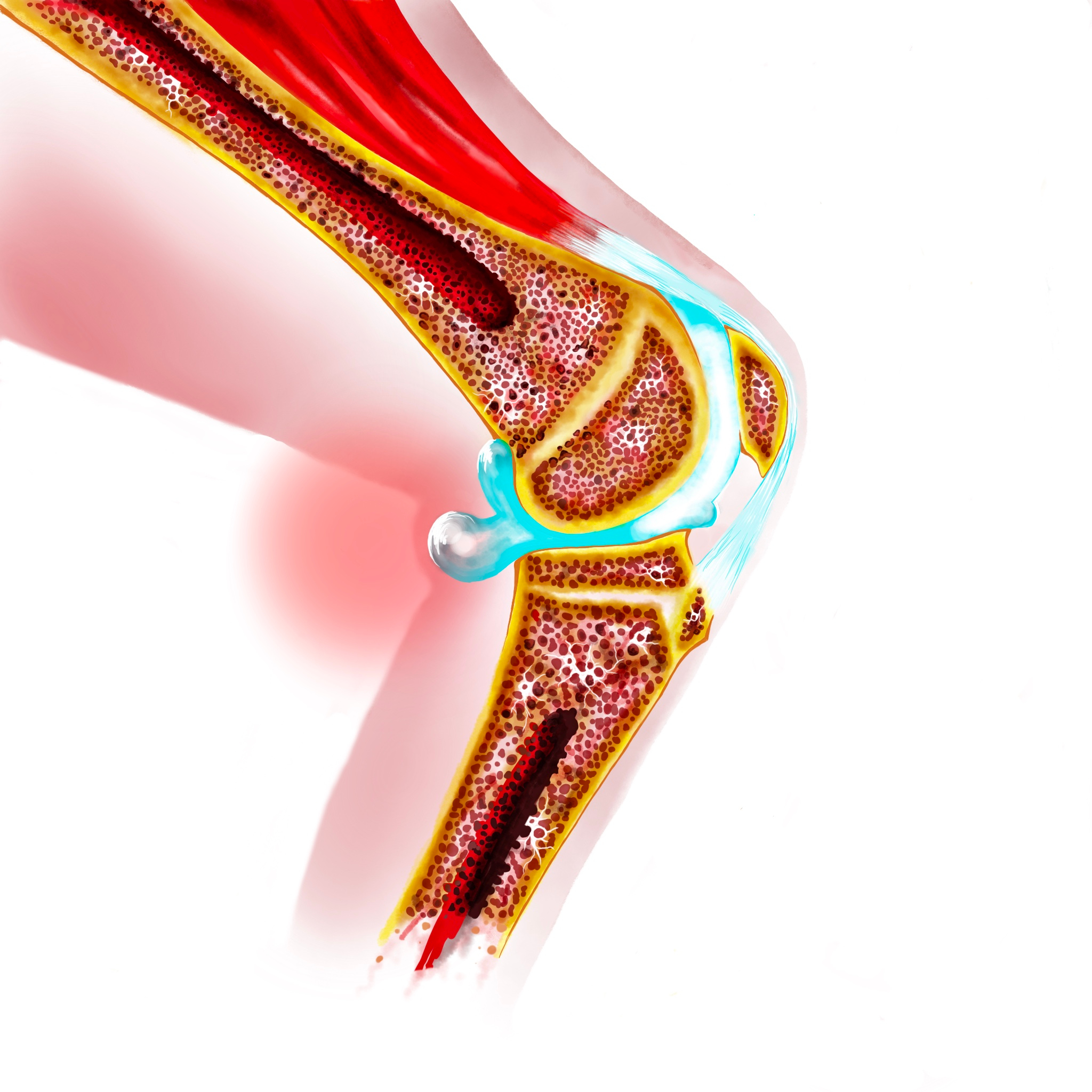A Baker’s cyst, also known as a popliteal cyst, is an inflamed bursa (a fluid-filled sac that cushions bones, tendons and muscles near a joint) that can cause a bulge and a feeling of tightness behind your knee. It is usually the result of too much swelling or fluid in your knee joint. Some people can feel pain posteriorly to the knee. The pain can get worse when you fully flex (bend) or extend (straighten) your knee or when you’re active on the knee.

Causes
Sometimes the knee produces too much synovial fluid, resulting in build-up of fluid in an area on the back of your knee (popliteal bursa), causing a Baker’s cyst. This can happen because of:
Injury – trauma or injury to the knee that can cause a build-up of excess fluid
Arthritis – particularly rheumatoid arthritis and osteoarthritis
Infection – can cause fluid to build up around the knee joint
Unknown causes – Baker’s cysts can sometimes develop due to biomechanical insufficiency or for no apparent reason
Diagnosis
A physical examination along with an ultrasound or MRI can help identify a Baker’s cyst. These scans can help to rule out other pathologies.

Complications
Rarely, a Baker’s cyst bursts and the synovial fluid can leak into the calf region. This may cause pain into the knee, swelling in the calf and sometimes, redness in the calf or a feeling of fluid running down the calf.
These signs and symptoms closely resemble those of a blood clot in a vein in your leg. If you have swelling and redness of your calf, you will need prompt medical evaluation to rule out a more serious cause of your symptoms.
Treatment
Asymptomatic Baker’s cysts are left alone and do not require treatment. If symptomatic, your physiotherapist might advise you in the short term to avoid activities that aggravate your knee joint. They can help to alleviate some of the pain by reducing the surrounding muscle tightness which can result from pain and swelling behind the knee. Your physio may also advise you to include heat or ice therapy, exercises to reduce biomechanical insufficiencies, and stretches to assist with the mobility of your knee. In a small number of circumstances the cyst may need to be drained or require surgical removal.


